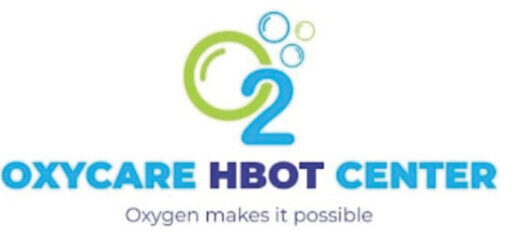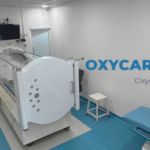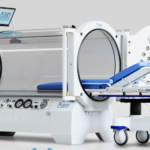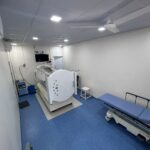Introduction
Diabetic foot ulcers are one of the most common and severe complications of diabetes, affecting millions of people worldwide. Left untreated, these ulcers can lead to serious infections, amputations, and even death. Traditional treatments often fall short in speeding up the healing process, which is why many people are now turning to Hyperbaric Oxygen Therapy (HBOT) for diabetic foot ulcers.
In this comprehensive blog post, we will explore the role of HBOT in healing diabetic foot ulcers, how it works, its benefits, and the scientific evidence supporting its effectiveness. By the end of this article, you’ll have a clear understanding of why HBOT is becoming a game-changer in the treatment of diabetic foot ulcers and how it can dramatically improve the quality of life for diabetic patients.
What is Hyperbaric Oxygen Therapy (HBOT)?
Hyperbaric Oxygen Therapy (HBOT) is a medical treatment that involves breathing 100% oxygen in a pressurized chamber. Under these conditions, oxygen is dissolved into the bloodstream and transported to the tissues throughout the body. This helps improve the body’s ability to heal by enhancing cellular regeneration, tissue oxygenation, and immune response.
How Does HBOT Work for Diabetic Foot Ulcers?
Diabetic foot ulcers are often caused by poor circulation and reduced oxygen delivery to the affected tissues. HBOT works by providing the body with an enhanced supply of oxygen, which can accelerate the healing process in the following ways:
- Increases Oxygen Delivery to Tissues: Oxygen is a vital component for wound healing. Under normal circumstances, oxygen might not reach the ulcerated areas due to poor blood circulation. HBOT helps by delivering more oxygen directly to the tissues, promoting healing and reducing the risk of infection.
- Promotes Angiogenesis (New Blood Vessel Growth): One of the challenges in treating diabetic foot ulcers is poor blood flow. HBOT has been shown to stimulate angiogenesis, the formation of new blood vessels, improving circulation and promoting faster healing.
- Reduces Inflammation and Swelling: Diabetic foot ulcers often become inflamed, which can delay the healing process. HBOT has anti-inflammatory effects that help reduce swelling and create a more favorable environment for healing.
- Boosts Immune System Function: Oxygen is crucial for the immune system to function optimally. HBOT enhances the body’s immune response, which helps fight off infections that can complicate diabetic foot ulcers.
Why Diabetic Foot Ulcers Are a Serious Concern
Before we dive deeper into how HBOT can help, it’s important to understand why diabetic foot ulcers are so concerning for people with diabetes.
Diabetes can cause several issues in the body, including nerve damage (neuropathy) and poor circulation, both of which contribute to the formation of foot ulcers. These ulcers are typically slow to heal, and untreated or poorly managed ulcers can lead to:
- Severe infections that can spread to bones or bloodstream.
- Amputations if the infection cannot be controlled.
- Reduced quality of life, including pain, limited mobility, and the emotional toll of living with a chronic wound.
The Role of HBOT in Diabetic Foot Ulcer Treatment: Key Benefits
1. Accelerates Wound Healing
Studies have shown that HBOT for diabetic foot ulcers significantly improves the rate of wound healing. By delivering high levels of oxygen to the damaged tissues, HBOT promotes the formation of new cells, speeds up collagen production, and enhances the body’s natural ability to repair itself.
A study published in the Journal of Diabetes Research found that patients who received HBOT experienced faster healing times and better outcomes compared to those who received traditional treatments.
2. Prevents Amputation
One of the most concerning risks of diabetic foot ulcers is the need for amputation. Research suggests that HBOT can significantly reduce the risk of amputation by promoting faster healing, reducing the likelihood of infection, and improving blood circulation to the ulcerated areas.
By facilitating the body’s ability to heal naturally, HBOT can prevent the need for drastic surgical procedures and improve the chances of saving the limb.
3. Reduces the Risk of Infection
Diabetic foot ulcers are prone to infections due to poor circulation and reduced immune response. HBOT enhances the body’s immune system, helping white blood cells fight off infections more effectively. Oxygen-rich environments also inhibit the growth of anaerobic bacteria, which thrive in low-oxygen conditions.
4. Improves Circulation
In patients with diabetes, poor circulation is a common issue that slows down the healing process of ulcers. HBOT stimulates angiogenesis (the creation of new blood vessels), which improves blood flow to the affected area. This ensures that the tissue receives more oxygen and nutrients, essential for faster healing.
5. Reduces Pain and Swelling
Another significant benefit of HBOT is its ability to reduce pain and swelling, which are common symptoms associated with diabetic foot ulcers. By improving oxygenation and promoting tissue regeneration, HBOT creates an environment conducive to healing, reducing the discomfort often associated with open wounds.
Scientific Evidence Supporting HBOT for Diabetic Foot Ulcers
Multiple studies have explored the effectiveness of Hyperbaric Oxygen Therapy in treating diabetic foot ulcers. Some of the most notable findings include:
- A study published in the Diabetic Medicine journal found that patients with chronic diabetic foot ulcers who underwent HBOT experienced faster healing and a higher rate of ulcer closure compared to those who received standard treatment.
- Research in the Wound Repair and Regeneration journal showed that HBOT reduced the time to wound closure and improved the overall quality of life for diabetic patients with foot ulcers.
- A systematic review published in the Journal of Clinical Medicine concluded that HBOT is a safe and effective treatment for diabetic foot ulcers, with significant improvements in wound healing, infection control, and pain reduction.
How HBOT is Administered for Diabetic Foot Ulcers
HBOT is typically administered in a monoplace or multiplace chamber. The patient breathes 100% oxygen while inside the chamber, and the pressure is gradually increased to about 2 to 2.5 ATA (atmospheres absolute). Sessions usually last between 60 and 90 minutes, and patients may need multiple sessions depending on the severity of the foot ulcer.
The number of sessions will be determined by the healthcare provider based on the patient’s individual needs and the severity of the diabetic foot ulcer.
Are There Any Risks or Side Effects of HBOT?
Hyperbaric Oxygen Therapy is generally considered safe, but like any medical treatment, it comes with some risks, including:
- Ear barotrauma (pressure-related injury to the ear).
- Temporary vision changes (myopia or nearsightedness).
- Oxygen toxicity (in rare cases).
- Claustrophobia (in some patients).
However, these risks are minimal, and the benefits of HBOT far outweigh the potential complications, especially when used under the supervision of trained medical professionals.
Conclusion: A Hopeful Solution for Diabetic Foot Ulcers
Diabetic foot ulcers are a serious complication of diabetes that can lead to infections, amputations, and a significant decline in quality of life. Hyperbaric Oxygen Therapy (HBOT) offers a promising solution by enhancing oxygen delivery to the affected areas, promoting healing, preventing infections, and improving overall circulation.
If you or a loved one is struggling with diabetic foot ulcers, consider consulting with a healthcare provider about the possibility of using HBOT as part of a comprehensive treatment plan. With the right care and therapy, diabetic foot ulcers can heal faster, reducing the risk of serious complications and improving your quality of life.
FAQs About Hyperbaric Oxygen Therapy for Diabetic Foot Ulcers
1. How many HBOT sessions are needed for diabetic foot ulcers?
The number of sessions required depends on the severity of the ulcer. Typically, 20 to 30 sessions are recommended, but this can vary based on individual circumstances.
2. Is HBOT covered by insurance for diabetic foot ulcers?
In many cases, HBOT for diabetic foot ulcers is covered by insurance, but it’s essential to check with your provider to confirm coverage.
3. Can HBOT cure diabetic foot ulcers permanently?
HBOT significantly accelerates the healing of diabetic foot ulcers, but it should be part of a broader treatment plan that includes proper wound care, diabetes management, and lifestyle modifications.
4. Are there any side effects of HBOT?
HBOT is generally safe, but potential side effects include ear pain, temporary vision changes, and claustrophobia.








Leave a Reply